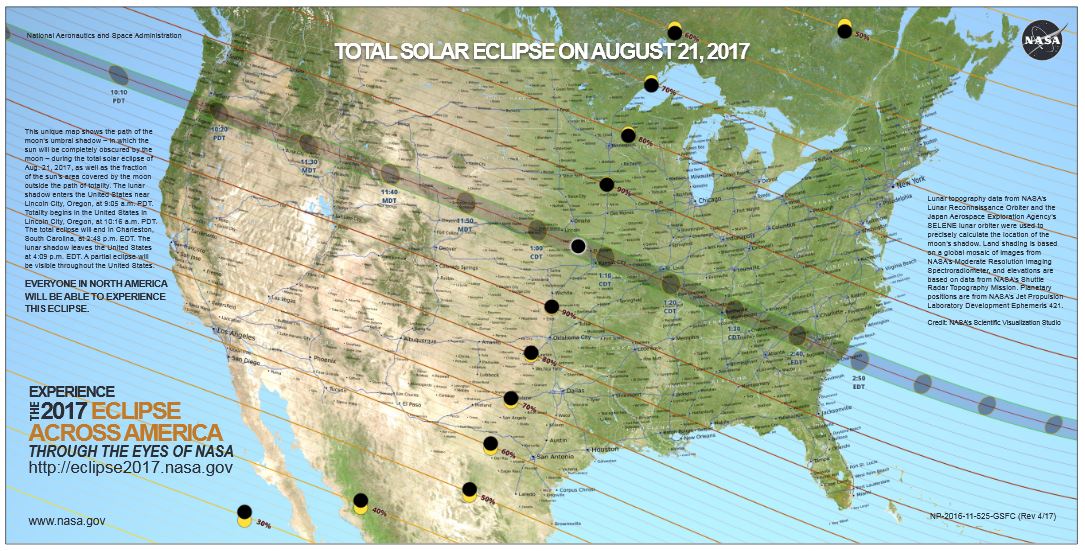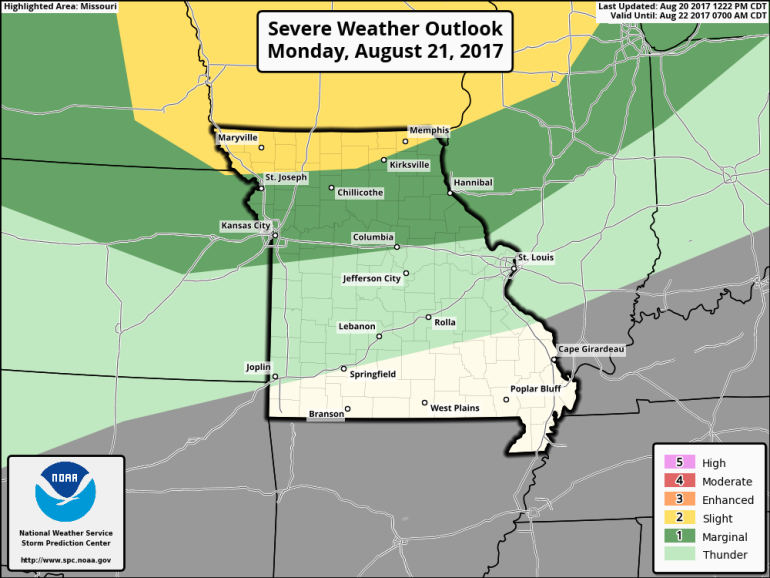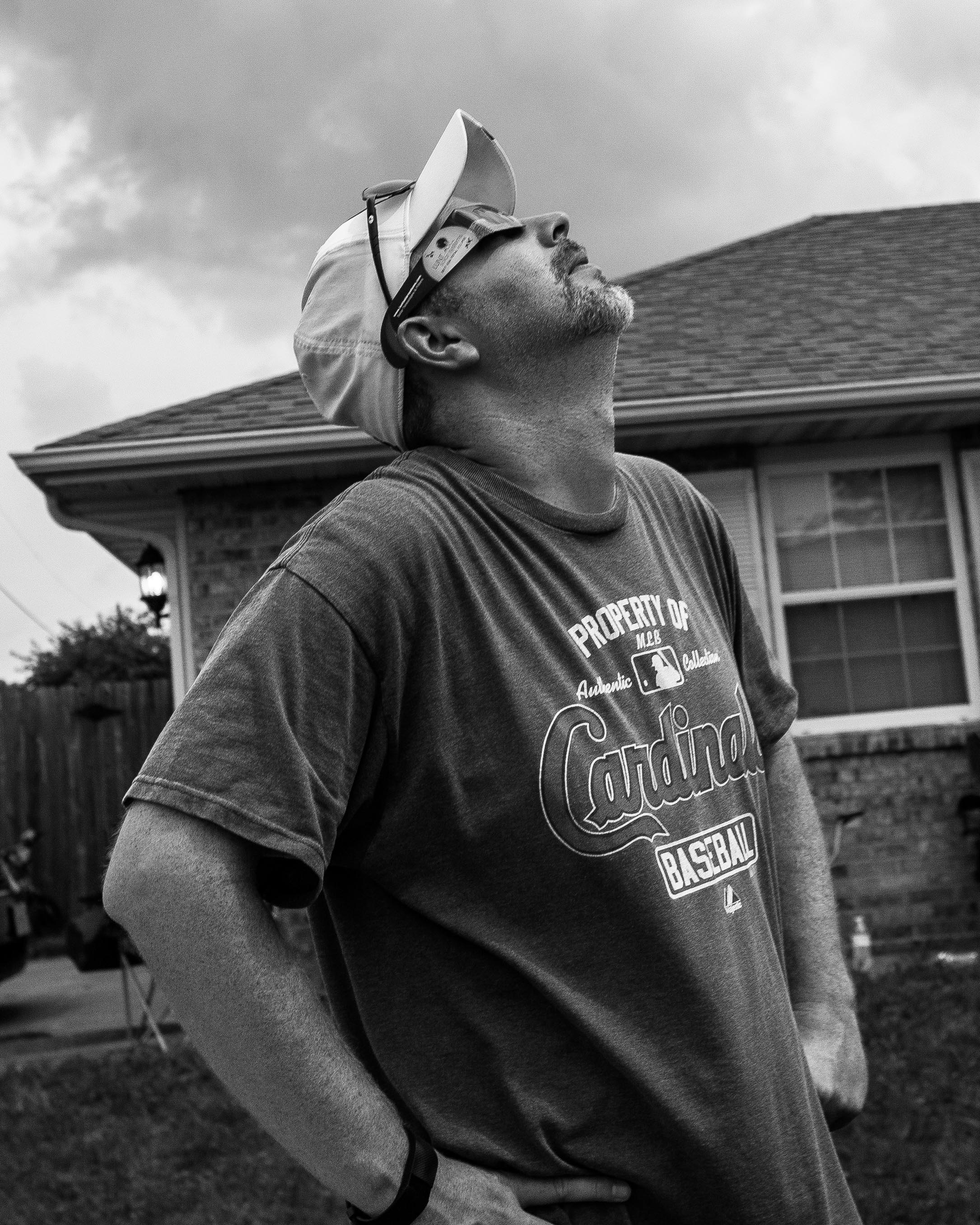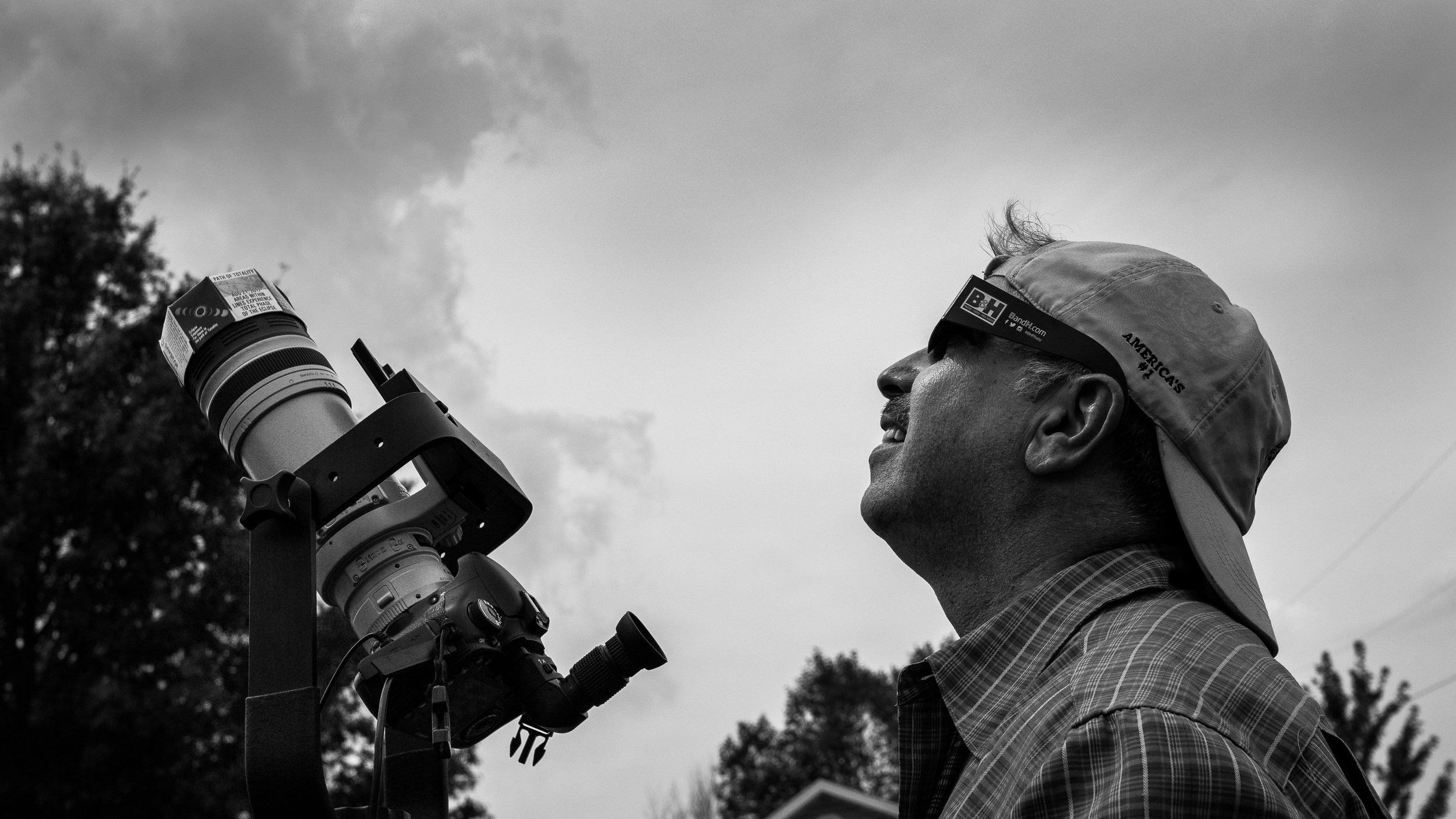I had always wondered why people would go to the ends of the earth to witness the totality of a solar eclipse. My wife's former boss was one of those people. He would share his adventures with us in his annual family holiday message in the years when there was an eclipse, regardless if it was in the sub-Saharan deserts of Africa, the Arctic Circle, or in the middle of the Atlantic ocean.
While the photos were cool, I didn't get it.
What I get, as a photographer, is the effort involved to take a good photograph and the need to learn new techniques to turn good photos into great ones. Whether it's to find the right look for a promising actress, a kiss of the late afternoon sun on the granite face of Half Dome in Yosemite, or an attempt at capture a dramatic sunset on the high seas, I am not afraid of an adventure.
(Before I continue, please note this article is not a technical guide on how to photograph an eclipse but a shared experience of my adventures as a photographer. If you're interested in technical information, this article is a good place to start.)
By chance, I became aware of the location of the next solar eclipse – also known as the Great American Eclipse – at the same time I was asked to attend a three-day, closed-door work planning session in Texas. The eclipse, the first of its kind in the U.S. in 99 years, fell the day before the business trip, so I thought this would be a good opportunity to learn some new photography techniques while also getting a chance to see what was the big deal to experience totality.
To be honest, I was actually starting to get excited.
Looking at NASA's map of the path of the 2017 eclipse across America, the initial plan was for me to fly from Los Angeles into Dallas/Ft. Worth airport on Sunday, August 20, rent a car, and drive to the closest spot of the eclipse – Kansas City – about an eight-hour drive. Not optimal – and Kansas City was barely inside the line of totality - but it seemed about as realistic as it was going to get.
Path of the 2017 Eclipse Across America. Click to see enlarged map (image courtesy of NASA).
The next day at work, I mentioned my plans on a conference call with my friend and coworker, Chris. Chris works just outside of St. Louis. He mentioned that he and his family would be spending the eclipse at his brother CJ's house in Columbia, Missouri (which just happened to fall along the center line of totality), and, without hesitating, said I was more than welcome to join them.
In short, Columbia was seemingly a perfect fit. I had been there twice before (once for a water polo tournament with my oldest son in 2007 and the other time for a Bruce Springsteen concert in 2009) so I had an idea of what to expect from a driving perspective. As a vibrant college town (Go, Tigers!) it was also one of the few locations within totality with a moderately large population base (more than 120,000 residents). In addition, it was going to experience one of the longest periods of totality - approximately two minutes, 32 seconds.
As a college football haven, Columbia was used to managing large crowds and heavy traffic. However, for this event, city leaders were bracing for an influx of a half a million people to invade the town.
As romantic as it seems to drive eight-hours one way to view this once-in-a-lifetime event (nine hours to Columbia), reality set in when I was reminded I had to drive another nine-hours in the heat, humidity and traffic back to Dallas.
Since I hadn't already made flight plans for my trip for work, I decided it made the most sense to fly from Los Angeles to St. Louis, spend the night there, drive 90 minutes to Columbia in the morning, spend a few hours with Chris' family while photographing the eclipse, drive back to St. Louis, and fly to Dallas in the morning for the business trip. Also, since I was there, I would make plans after the eclipse to drive to Grafton, Illinois – just north of St. Louis – to take pictures of the sunset near the confluence of the Illinois, Missouri and Mississippi Rivers.
That was my plan and I was sticking to it – for the time being.
From a photography perspective, I began to read everything I needed to know about how to plan and what to expect during an eclipse. While a steady tripod, long telephoto lens and solar filter were standard equipment, the most important aspect was one word: Practice!
I know what you're thinking: How do you practice for an eclipse? The reason for practice is much the same reason you would prepare for an exam or any shooting assignment. Besides having the right equipment and knowing how to use it, there are very specific steps you need to take. Also, the way you photograph the first part of the eclipse – when the moon begins to cover the sun – is much different than when there is complete coverage (or totality). While two-and-a-half minutes sounds like a lot of time, I was told it goes by very quickly. If you're not ready, you'll miss not only taking photos but also the experience of an eclipse.
The Weather Wildcard
Areas of totality within three-hour radius of St. Louis (gray band)
With my travel plans in place, Chris and I talked about weather expectations. While I greatly appreciated the opportunity to spend the day with his family (and not half a million strangers), my top priority was to find a safe location within the area of totality with the best chance of photographing the event. Unfortunately about a week before, the weather forecast was not looking good for Columbia.
As you can see from this map, I had several options within a two-hour drive from St. Louis as my base: Columbia, MO (west) was my first choice, followed by Carbondale, Illinois (southeast), then anyplace in-between to keep my plans somewhat flexible during possible inclement weather. From a safety perspective, I just didn't want to be in the middle of nowhere. Carbondale, too, is a college town (Go, Salukis!) and NASA was using it to cover the event. While no storm fronts were predicted during my stay, weather patterns in the midwest in the summer can be unpredictable as thunderstorms can pop up with little notice. I mapped out my options and kept a regular eye on the forecast.
The day before the event, I had bad news for Chris. The weather forecast during totality for Columbia was cloudy with a high chance of thunderstorms. Carbondale was predicting partly clouds and less than a 10% chance of rain. While I wouldn't make a final decision until 6am the morning of the eclipse, my plans appeared to be in place. I'm heading to Carbondale!
Or so I had thought.
Welcome to the "Show Me" State
When I landed in St. Louis around midnight on Sunday, I was welcomed with a furnace blast - 90 degrees and almost as much humidity. In the short walk from the airport terminal to the rental car shuttle bus, I was soaking in sweat from head to toe. Toto, I don't think we're in Southern California anymore...
Monday morning, as I was packing the rental "car" with my 50 pounds of camera gear, the weather forecast between Columba and Carbondale flipped. With partly cloudy now the prediction, Columbia was my best chance to capture the eclipse, allowing me to get to spend some time with Chris and his family in the friendly confines of a private house, rather than the roof of a parking garage or, worse yet, in the middle of a corn field off a rural highway (unless that's your idea of a good time).
My rental "car" – a 2017 Chevy Tahoe.
While I reserved the cheapest car available, Budget issued this FastBreak member a very large and very black Chevy Tahoe, complete with very dark tinted windows and New York license plates. Everywhere I went, people would stare – and I literally mean STARE – as if I was some kind of VIP as part of the spectacle that was invading Columbia. One of CJ's neighbors thought Hillary Clinton was in town. In fact, he actually walked all around the car and was looking in the driver side window before he noticed Chris and his dad sitting on the porch in front of the house. In a red, mostly rural and Open Carry state such as Missouri, that is not the kind of attention anyone really wants.
On the drive to CJ's house along Interstate 70, I was feeling a bit more relaxed. As I mentioned, I brought a lot of camera gear – two camera bodies, two heavy-duty tripods, a gimbal mount, lenses, filters, remotes, batteries, etc. – some of it quite expensive. My goal was to capture both the eclipse itself with a long telephoto lens as well as the sensory experience of the eclipse (and those around me) with my wide-angle lens (hence the two cameras). If I was going to be in a public area with lots of people, I was not sure how I would handle even the most simplest of tasks, such as using the restroom or getting something to eat or drink, without worrying about the gear.
(Side note: On the road, the Missouri Department of Transportation did its level best to protect travelers by alerting them about this once-in-a-lifetime event. Several of the electronic safety messages, however, I thought were unintentionally funny. The first one I saw said, "ECLIPSE TODAY. TURN ON HEADLIGHTS." Another said, "SOLAR ECLIPSE. DO NOT PARK ON HIGHWAY." Finally, the one here is self-explanatory (and one I apparently didn't follow). Don't worry. At that hour, there were very few cars on the road.)
Once I arrived at CJ's house, I was greeted warmly and treated like a family member. It was a great pleasure to meet and spend time with them – CJ and his two kids; Chris, his wife, Wintress, and their two kids; and Chris and CJ's father, Jim. While CJ's wife, Kellie, had to work much of the day, I got to spend some time with her near the conclusion of the eclipse.
I could not have asked for a better situation, socially and logistically. They were all terrific company as we hit it off really well, engaging in endless conversations with everyone. There was air conditioning, good food, cold drinks, and dessert. While my photography gear was setup in the front yard, I didn't have to worry about it for a minute. Midwestern hospitality at its finest.
What was unexpected (in a good way) was the level of interest and detail that CJ had taken in preparation of the eclipse. While I read a lot on what to expect, he was a step ahead of me on the learning curve, which was very helpful. From tracking the weather and regularly measuring the temperature levels to using the same Eclipse app that I had, the level of geekiness on display was very much welcomed.
First contact of the eclipse started at 11:45:48 am CT. Totality began at 01:12:31 pm CT and ended at 01:15:03 pm CT. The eclipse was completely over at 02:40:18 pm CT.
Clouds and Photos – Finding the Sun
As I noted earlier, my goal was to try and capture both the eclipse itself with a long telephoto lens (i.e. the different stages of the moon covering the sun) as well as the sensory experience of the eclipse (and those around me) with my wide-angle lens.
My Before shot of the sun. Note the sunspots in the center and bottom left. FYI - the sun appears orange in these images due to the darkness of the solar filters used on the camera lens.
In order to give some photographic perspective on the event, it was important to capture the before shot of the eclipse as much as the during and after shots. One of the first things I did after arriving at CJ's house was to take a photo of the sun before any part of the moon was covering it. Thankfully, there were no clouds in the way.
After this shot, however, the clouds would cause havoc and play a large role in photographing the eclipse all the way up until totality. In fact, most of the early photos of the eclipse before totality were quite fuzzy as even finding the sun in the sky through the camera proved to be quite frustrating.
As mentioned earlier, CJ and I were using the same app on our smartphones – Solar Eclipse Timer. I could not ask more out of an app. First, it calculates your location via GPS and how it relates to the eclipse. For example, once I checked in my position, it not only told me when to expect the eclipse to begin, it also told me the times of the different phases of the eclipse, when totality would begin, how long totality would last, when to put on/take off/put on my solar glasses and filters, etc. The best part is that it would tell me not with a beep or ring but with an actual human voice.
The app would also give me a countdown on when things would occur – and it would be correct to the second.
Fuzzy image of the sun due to heavy clouds in the region of Columbia, Missouri. FYI - the sun appears orange in these images due to the darkness of the solar filters used on the camera lens.
Approaching Totality
As we got closer to totality, time seemed to both stop and accelerate at the same time. Because of the clouds, I continued to struggle to track and focus on the sun with my camera. As important as it was for me to get good photos, part of this experience was to get in tune with nature and myself, finding that spiritual realm that many eclipse chasers seek. As a God-loving person, sometimes you just have to let go of the things you want and look for the things He provides – the things we need – happiness, companionship, contentment.
Just before totality, there was a point where I recall taking a very deep breath and saying to myself, "Relax. You made it this far. Try and enjoy the moment. Photos are merely gravy at this point."
About a minute before totality, the sky was getting darker, the temperature was dropping, the clouds began to clear, and the dogs in the house started going absolutely nuts.
They knew.
Totality – the Moment of Truth
When they say practice makes perfect, believe it.
By getting myself to relax, I found the presence of mind to remember why I was in somebody's front yard in the middle of the country with 50 pounds of photographic equipment. It was surreal. I found myself taking photos with one camera of the totality of the moon crossing in front of the sun, then also found myself with my other camera, taking wide-angle photos of the sky, the horizon, and the people who befriended me just a few hours earlier.
I also remembered to breathe, and the clouds remembered to get out of the way.
During totality, the Solar Eclipse Time app began to provide audible announcements that also helped me stay focused when I spent too much time doing something else. Some of the announcements included:
Observe Changes in Ambient Temperature.
Observe the Horizon.
Observe for Shadow Bands.
Observe Changes In Animal Behavior.
Observe Changes In Ambient Lighting.
Start taking rapid images for Baley's Beads and the Diamond Ring.
During totality, I noticed the darkness had enveloped everything. I noticed the light of sunset could be found in every direction along the horizon. I noticed a cool evening breeze soothed my body and soul, even though it was just after 1pm. I noticed the street lights had come on. I noticed the birds had suddenly gone quiet as they nested in their trees. I noticed my new friends ooooh-ing and awe-ing at this amazing site above us. I noticed the crickets chirping and frogs croaking. I heard neighbors screaming as if the clock struck midnight on New Year's Eve. It was all nearly too much for me to handle.
And just like that, two minutes and thirty-two seconds later, it was over. Just. Like. That.
What Goes Up...
When the totality was over, I put my solar glasses and lenses back on, and continued to take photos of the waning eclipse. This time, however, it was easy. With clouds gone, the sun was easy to find and photos easy to take (you'll find these photos are used in the collage photo below). It was an anticlimactic moment. Not that I was disappointed. On the contrary. It was one of the great experiences of my life.
Then, it hit me.
After the rush of totality, I was struck by the fact that I was physically, emotionally and spiritually drained. I was physically drained from carrying all the equipment with me, plus the fact I had jet lag and very little sleep the past couple of days. I was emotionally drained from not knowing where I would be until the last minute, worrying about the whether the weather would cooperate, and if I would get any good photos out of this. Spiritually is little more personal, as I am not one to preach or try to convert people, but I am not one to deny God's existence. To me, this was another example and reminder of His plan and power over the universe. Combined by the impact of all three, I wanted to collapse and fall asleep right then and there. Then, my eyes started welling up. CJ saw this, came over and gave me a hug. I called my wife to share the experience with her. It was a great moment.
After I hung up the phone, CJ joked that we could probably do this every day, but just focus on the part that lasted two-and-a-half minutes. I could handle that. What I couldn't handle was a trip to Grafton, Illinois to photograph the sunset over the Mississippi River. The eclipse was enough for one day.
Then, CJ said, let's plan on doing this for the next U.S. eclipse in 2024.
Count me in. I get it.
# # #
Special thanks to the Alderton family for their love, graciousness and companionship.
Thanks to my wife and family for understanding the need for this trip was much more than the want.
Thanks to Gordon Telepun and Foxwood Astronomy for their amazing Solar Eclipse Timer App. Can't wait to use it again.
Thanks to the Creator of all things – seen and unseen – for the beauty He shares with us in this world and the Next. I am truly grateful.
This photo collage will be available shortly for purchase in limited release. Contact tarik@tradphoto.com for details.

















